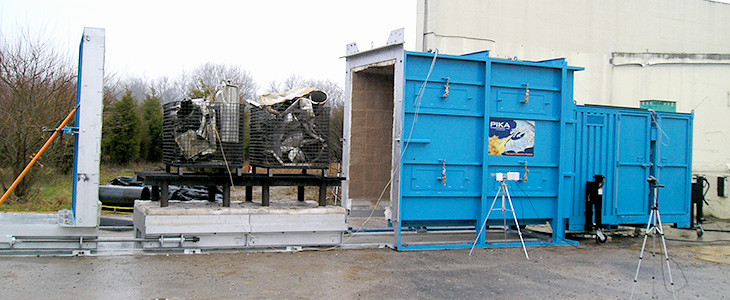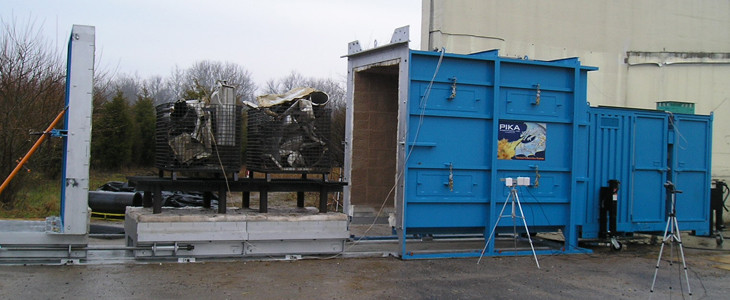In our client’s review (CPARS) for the Fort Wingate Depot Activity (FWDA) project, we received the highest rating of “Exceptional” in all categories.
FWDA sits among the red rocks along U.S. Interstate 40, between the reservations of the Navajo Nation and the Pueblo of Zuni Tribe in New Mexico. After the Depot was deactivated, a portion of the site was rented to a tenant that was on site conducting some demilitarization of munitions and working to develop innovative propellants and explosives. The tenant abandoned the site and left behind a storage igloo containing unidentified and abandoned energetic and Discarded Military Munitions (DMM) in various stages of being demilitarized. Our client “inherited” the characterization and disposal of the unknown energetics, and the safe completion of the demilitarization of the DMM. Because of the many unknowns associated with these items, our client needed a safe and effective means to characterize, remove and/or dispose of this highly volatile material in a very quick and very safe manner that was accepted by the regulatory agencies.
We were contracted to perform three primary tasks; write and get approval of the plans needed to manage and deal with the unidentified energetics and to finish the demilitarization of the munitions in storage; 2) conduct inspections, characterization, packaging, transportation, and disposal of the abandoned energetics and DMM; and 3) safely render the energetics and the DMM inert and safe to handle. This fixed price Task Order was issued under our broader ID/IQ Contract with the U.S. Army Sustainment Command (ASC), Rock Island.
The inspections revealed 16 boxes of unknown energetics in storage that were characterized as containing research-grade explosives, including Picric Acid, PETN, HMX, TNT, RDX, PBX, and Composition C-3. In conjunction with our client, the U.S. Army Corps of Engineers, we determined the safest, quickest, and most cost effective method of disposal for these energetic materials and to finish the demilitarization was to utilize our patent-pending Thermal Convection System (TCS). Using the TCS, we could safely expose the energetic materials and DMM to indirect temperatures exceeding 1700° F, then control and maintain exposure for several hours. The indirect gradual extreme temperatures allowed the energetic materials to harmlessly self-ignite and burn away leaving an inert stable ash. The DMM material was handled in the same manner with the explosives-contaminated metal DMM parts placed into the TCS and exposed to long-term indirect high temperatures. This exposure caused the explosive material to self-ignite and burn harmlessly, leaving the DMM explosive free.
We were awarded contract modifications due to the Government’s phased execution approach as well as the quantities of wastes recovered than were over the original Government estimation. To utilize the TCS, we worked closely with the client and New Mexico Environmental Department’s (NMED) Hazardous Waste Bureau (HWB) for a temporary emergency permit for the onsite TCS treatment of the energetics. We were also granted deminimis approval (safe to operate) for the TCS by NMED-HWB.
Due to our performance under this contract, we were awarded additional projects including the repair of aboveground magazines, development of standard operating procedures, and other munitions demolition/relocation activity. Several follow-on contracts at FWDA were also awarded to us through other agencies.
As you can see, we strive to partner with our clients to not only resolve their immediate problems but also to be there for them during their more complicated environmental actions. For more information on how we can assist with your needs, please contact us.


